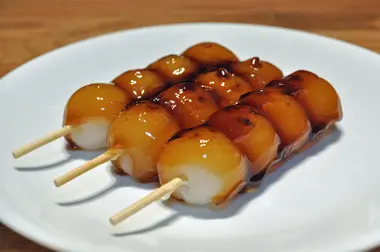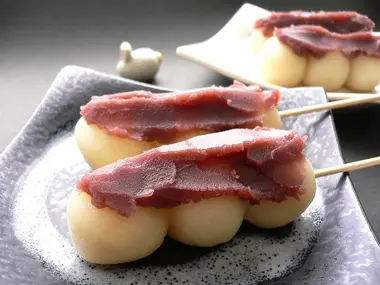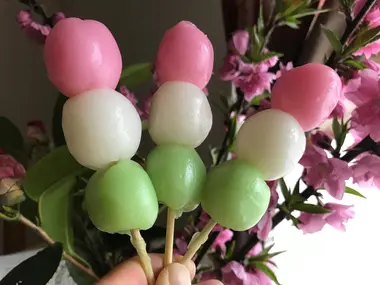Sorry, something went wrong. Please verify the information you have entered in the fields.
Dango: the kawaii mochi balls 団子
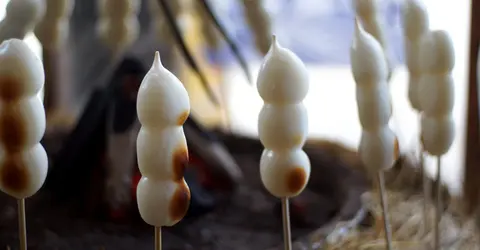
Les dango
Flick/M's photography
A very popular on-the-go snack
The dango is a small ball of mochi served in a skewer. Pink or green, sweet or savory, essential in the art of Japanese street food. Adored for their cute appearance, are loved by all.
Sticky rice balls
Usually presented in the form of three to five dumplings on a spike, dango is made of mochi, the sticky rice paste widely used in Japanese baking. Imported from China around the 10th century, they were then sold by street vendors near temples or along the famous Tokaido road (ancient trade route between Tokyo and Kyoto).
Today dango are available to infinity! Sometimes offered off the spike with tea, naturally.
A variety of dango
Whether you are a sweet tooth or not, there's always a dango you will like!
Grilled in soy sauce, coated in sesame, or flavored with sweet potato, there are as many varieties of dango. Varieties vary according to the seasons, but also to the prefectures since mochi balls are appreciated throughout the archipelago. Here are a few examples:
Anko dango
The most common variety of dango in Japan. Presented on a spit, the mochi balls are covered with red bean paste.
Chadango
Very popular in traditional tearooms, chadango are mochi balls sprinkled with matcha .
Botchan dango
The Botchan dango skewers come in 3 colors: red (flavored with red bean paste), white (egg), and green (matcha). They are often associated with the city of Matsuyama since they take their name from the novel Botchan by Natsume Soseki (1906), where the main character settles in the city renowned for its sweets.
Mitarashi dango
Mitarashi dango is a sweet dango with sugared soy sauce.
Nikudango
The nikudango is a ball of mochi stuffed with meat (Niku).
Sasadango
Originally from Niigata Prefecture, sasadango is a mochi dumpling preserved in a sasa leaf (a variety of bamboo). We can distinguish Onna dango (female dango) covered with anko from Otoko dango (male dango) stuffed with kinpira (vegetables cooked in a sweet and salty sauce).
Where to eat dango?
Although one can find one in konbini, it is at matsuri where dango shines. Easy to eat and the perfect snack for a quick fix during the festivities.
They can also be enjoyed in some traditional pastry shops, and a few specialty cafes now offer them in major cities. Like Cafe De Dango in the capital, which serves different varieties of mochi balls, accompanied by tea or coffee.
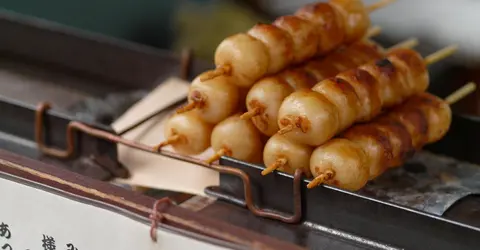
On retrouve beaucoup de dango sur les stands de matsuri
Flick/Mitarashi Dango
Dango recipe to make at home
Super-cute, today dango no longer appeals to gourmets. And against all odds, it is also in popular culture that we find these small skewers of mochi.
An emblem of Japanese pop culture
Due to its round and kawaii (super-cute) appearance, the dango has inspired many elements of popular culture. Starting with the famous proverb " Hana yori dango", literally " dango rather than flowers", referring to the Japanese love for simple and practical things rather than aesthetic and complex.
From this adage, was born the TV drama, Dango (adapted from a manga of the 1990s). This surge in popularity closely follows that instilled in 1999 by the song "Dango san kyodai" ("the three dango brothers"), a musical hit that sold several million copies...
Finally, we can cite the end credits of the anime CLANNAD, which takes up with poetry the story of the great "dango family (Dango daikazoku) on a soft and colorful tune.
